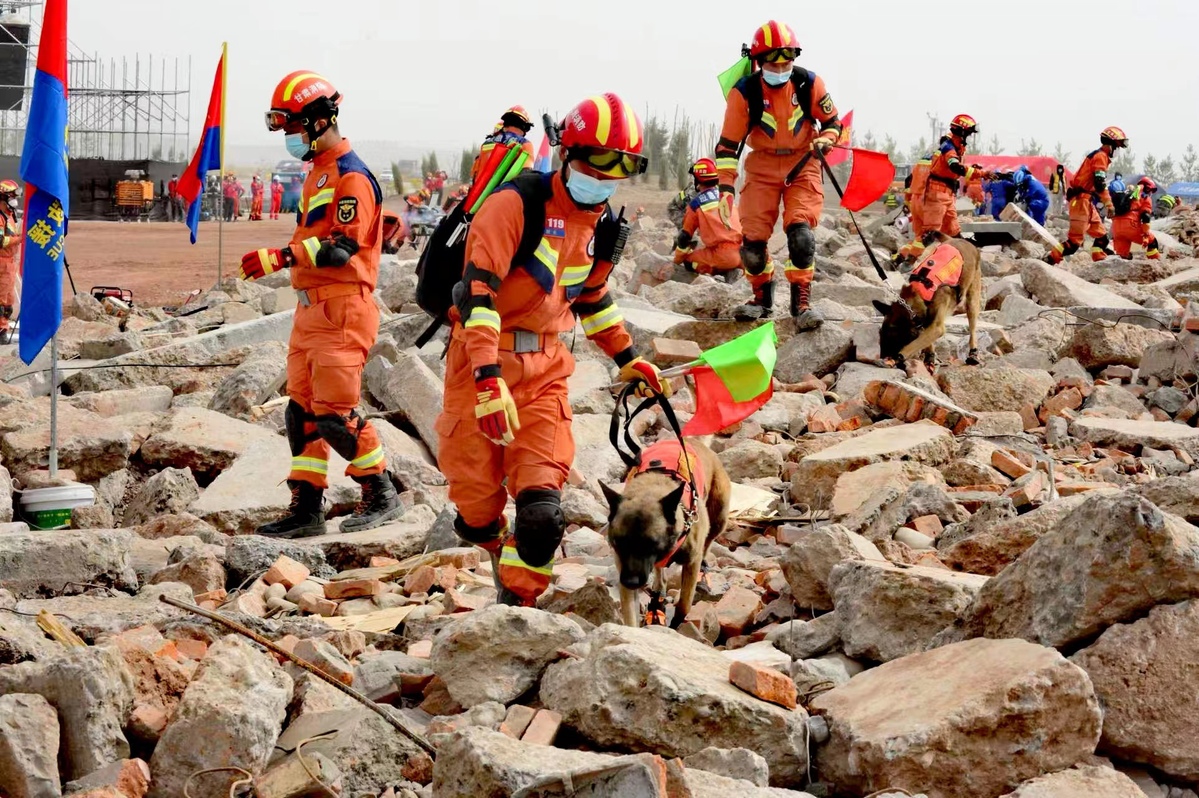
The China National Comprehensive Fire and Rescue Team has seen its disaster relief capabilities greatly strengthened since it was established four years ago, officials with the Ministry of Emergency Management said.
The team was established in 2018 in an institutional reshuffle of the State Council, the country's Cabinet. On Nov 9 that year, President Xi Jinping conferred the flag to the team, ordering them to be loyal to the Party, disciplined and devoted to the people.
Xi, also general secretary of the Communist Party of China Central Committee, stressed that the team should stand out when the people are most in need, save them from disasters, assist them in crises and heroically fight for their lives and property.
At the ceremony held in the Great Hall of the People, Xi extended congratulations to all members of the team on behalf of the CPC Central Committee.
A national fire and rescue team is important for developing a national emergency rescue network based on China's reality, enhancing the country's ability for disaster prevention and relief, safeguarding public security and protecting people's lives and property, he said.
In the past four years, the national comprehensive fire and rescue team "has preliminarily established a smooth and highly efficient command system", said Zhou Tian, chief engineer of the ministry's fire and rescue department.
Over 3,500 professional rescue teams have been set up across the country, he said. Many of them have dedicated expertise to cope with emergency situations in specific circumstances, such as in high-rise buildings, underground spaces, large commercial complexes and chemical plants, on water and during earthquakes.
Zhou also highlighted the significant increase in the team's rescue equipment.
With 9,800 new fire engines and vessels and 4.6 million new sets of devices for protective purposes and other uses in rescue work, the team has seen its rescue capabilities increasingly strengthened, he said.
In the past four years, the national comprehensive fire and rescue team has saved or evacuated almost 2.4 million people in roughly 6.2 million missions, he said.
Zhou said two air rescue bases have been built in the country, with one in southern China and one in the north. Air rescue forces are now capable of accepting tasks for forest fire control in 21 provincial regions.
Yan Peng, deputy head of the ministry's forest fire control bureau, said the air rescue forces have dispatched about 20,000 flights in rescue missions. In total, they have flown over 6,000 hours safe and sound.
He said the national fire and rescue team has intensified its efforts to promote the application of information technologies to meet emerging needs in its rescue missions.
One of the priorities in the work, for example, is to promote a digital shortwave communication system. It is now also equipped with terminals of the Beidou Navigation Satellite System.
The team has built up an integrated space-ground command communication network, he said.
